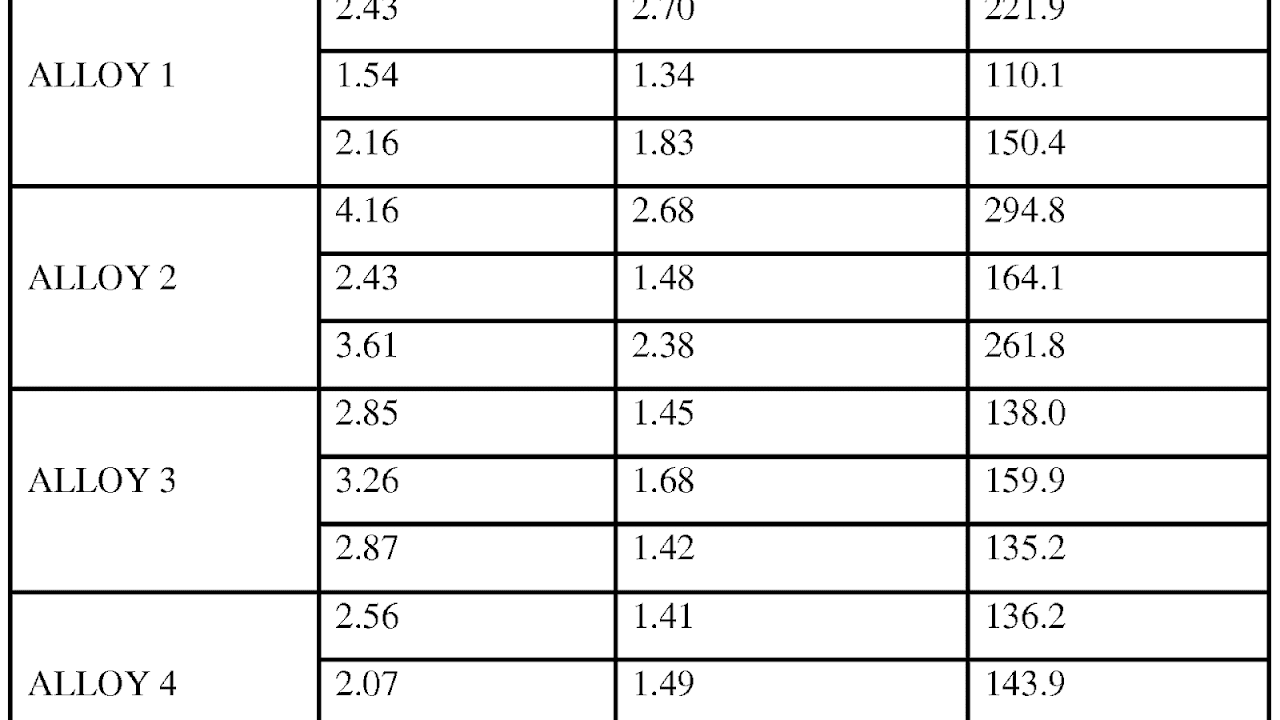
Ultimate tensile strength (UTS), often shortened to tensile strength (TS), ultimate strength, or Ftu within equations is the capacity of a material or structure to withstand loads tending to elongate, as opposed to compressive strength, which withstands loads tending to reduce size. In other words, tensile strength resists tension (being pulled apart), whereas compressive strength resists compression (being pushed together). Ultimate tensile strength is measured by the maximum stress that a material can withstand while being stretched or pulled before breaking. In the study of strength of materials, tensile strength, compressive strength, and shear strength can be analyzed independently.
Some materials break very sharply, without plastic deformation, in what is called a brittle failure. Others, which are more ductile, including most metals, experience some plastic deformation and possibly necking before fracture.
The UTS is usually found by performing a tensile test and recording the engineering stress versus strain. The highest point of the stress-strain curve (see point 1 on the engineering stress-strain diagrams below) is the UTS. It is an intensive property; therefore its value does not depend on the size of the test specimen. However, it is dependent on other factors, such as the preparation of the specimen, the presence or otherwise of surface defects, and the temperature of the test environment and material.
Tensile strengths are rarely used in the design of ductile members, but they are important in brittle members. They are tabulated for common materials such as alloys, composite materials, ceramics, plastics, and wood.
Tensile strength can be defined for liquids as well as solids under certain conditions. For example, when a tree draws water from its roots to its upper leaves by transpiration, the column of water is pulled upwards from the top by the cohesion of the water in the xylem, and this force is transmitted down the column by its tensile strength. Air pressure, osmotic pressure, and capillary tension also plays a small part in a tree's ability to draw up water, but this alone would only be sufficient to push the column of water to a height of less than ten metres, and trees can grow much higher than that (over 100 m).
Tensile strength is defined as a stress, which is measured as force per unit area. For some non-homogeneous materials (or for assembled components) it can be reported just as a force or as a force per unit width. In the International System of Units (SI), the unit is the pascal (Pa) (or a multiple thereof, often megapascals (MPa), using the SI prefix mega); or, equivalently to pascals, newtons per square metre (N/m²). A United States customary unit is pounds per square inch (lb/in² or psi), or kilo-pounds per square inch (ksi, or sometimes kpsi), which is equal to 1000 psi; kilo-pounds per square inch are commonly used in one country (US), when measuring tensile strengths.

Maps, Directions, and Place Reviews
Concept
Ductile materials
Many materials can display linear elastic behavior, defined by a linear stress-strain relationship, as shown in figure 1 up to point 3. The elastic behavior of materials often extends into a non-linear region, represented in figure 1 by point 2 (the "yield point"), up to which deformations are completely recoverable upon removal of the load; that is, a specimen loaded elastically in tension will elongate, but will return to its original shape and size when unloaded. Beyond this elastic region, for ductile materials, such as steel, deformations are plastic. A plastically deformed specimen does not completely return to its original size and shape when unloaded. For many applications, plastic deformation is unacceptable, and is used as the design limitation.
After the yield point, ductile metals undergo a period of strain hardening, in which the stress increases again with increasing strain, and they begin to neck, as the cross-sectional area of the specimen decreases due to plastic flow. In a sufficiently ductile material, when necking becomes substantial, it causes a reversal of the engineering stress-strain curve (curve A, figure 2); this is because the engineering stress is calculated assuming the original cross-sectional area before necking. The reversal point is the maximum stress on the engineering stress-strain curve, and the engineering stress coordinate of this point is the ultimate tensile strength, given by point 1.
The UTS is not used in the design of ductile static members because design practices dictate the use of the yield stress. It is, however, used for quality control, because of the ease of testing. It is also used to roughly determine material types for unknown samples.
The UTS is a common engineering parameter to design members made of brittle material because such materials have no yield point.
Tensile Test Of Steel Video
Testing
Typically, the testing involves taking a small sample with a fixed cross-sectional area, and then pulling it with a tensometer at a constant strain (change in gauge length divided by initial gauge length) rate until the sample breaks.
When testing some metals, indentation hardness correlates linearly with tensile strength. This important relation permits economically important nondestructive testing of bulk metal deliveries with lightweight, even portable equipment, such as hand-held Rockwell hardness testers. This practical correlation helps quality assurance in metalworking industries to extend well beyond the laboratory and universal testing machines.
While most metal forms, such as sheet, bar, tube, and wire, can exhibit the test UTS, fibers, such as carbon fibers, being only 2/10,000th of an inch in diameter, must be made into composites to create useful real-world forms. As the datasheet on T1000G below indicates, while the UTS of the fiber is very high at 6,370 MPa, the UTS of a derived composite is 3,040 MPa - less than half the strength of the fiber.

Typical tensile strengths
Source of the article : Wikipedia


EmoticonEmoticon